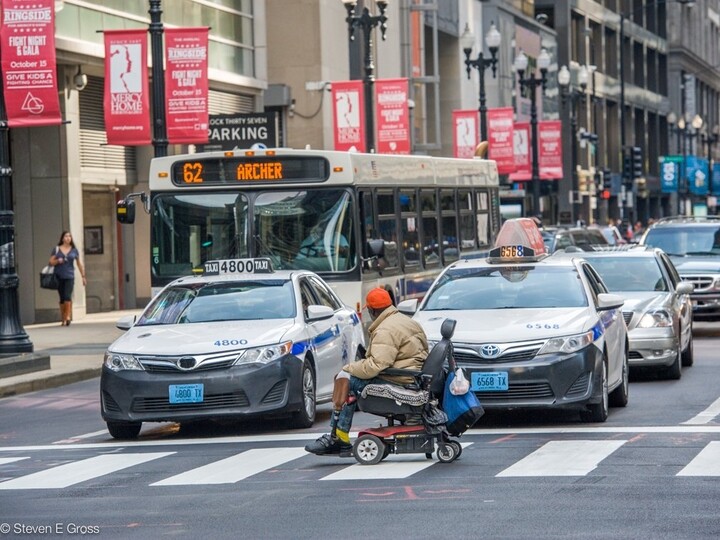With an influx of federal funding on its way to Illinois, advocates across the state and across the country are reminding state leadership that the funds must be spent on projects that enhance equity and sustainability.
As part of that effort, Active Trans joined 50 other advocacy groups from across Illinois in sending a letter to Governor Pritzker and Illinois Department of Transportation Secretary Omer Osman that underscores the great need for them to move beyond the status quo in transportation spending. This means investing in projects that create a transportation system that is more equitable, sustainable, economically productive, safe, accessible, and affordable.
State departments of transportation, in our case the Illinois Department of Transportation, have outsized control of how these federal funds will be spent. During the spending process, advocacy organizations like Active Trans will be tracking their progress to ensure that the funding follows the federal memorandum on how to prioritize new investments with a values-based approach, rather than business as usual.
Here are excerpts from the letter:
We are writing to call your attention to new guidance from the U.S. Department of Transportation on how to spend these funds. The memorandum sets clear expectations for how to prioritize new investments in a way that makes our communities safer, more accessible, sustainable, and equitable.
To achieve these goals and solve our transportation problems, we have to stop expanding highways and embrace the full range of solutions that federal funding can support. IDOT has the flexibility to spend federal funds on the state’s 63 distinct public transit systems, solutions that reduce air pollution and address the climate crisis, complete streets projects that offer safe alternatives to driving such as walking and biking, ADA improvements for the disabled and mobility impaired, infrastructure to unite neighborhoods separated by freeways, and improved transit access for rural and tribal communities.
We call on you to spend these funds in a way that helps Illinois become more equitable and sustainable following the objectives hereafter. U.S. DOT outlined investments and projects that will help “Build a Better America,” including:
-
- Reconnect communities and reflect the inclusion of disadvantaged and under-represented groups in the planning, project selection and design process;
- Improve the condition, resilience and safety of road and bridge assets consistent with asset management plans (including investing in the preservation of those assets);
- Promote and improve safety for all road users, particularly vulnerable users;
- Make streets and other transportation facilities accessible to all users and compliant with the Americans with Disabilities Act;
- Address environmental impacts ranging from stormwater runoff to greenhouse gas emissions;
- Prioritize infrastructure that is less vulnerable and more resilient to a changing climate; and
- Future-proof our transportation infrastructure by accommodating new and emerging technologies like electric vehicle charging stations, renewable energy generation, and broadband deployment in transportation rights-of-way.
We especially stress the importance of investing in public transit systems. We know that abundant transit unlocks freedom of movement and dramatically increases access to opportunity. When people can count on the bus or train to get where they need to go, they can easily access jobs, education, medical care, culture, goods and services, and the daily life of their communities. They benefit from greater economic mobility and lower household costs. Transportation systems that maximize people’s access to good transit are necessarily inclusive, without barriers linked to race, income, age, or ability. And because transit is resource-efficient and supports low-emissions neighborhoods, it’s also an indispensable tool to prevent climate change, clean our air, and protect public health. It is also important to develop “first mile/last mile” connections to transit to further encourage active transportation and reduce reliance on motor vehicles.

